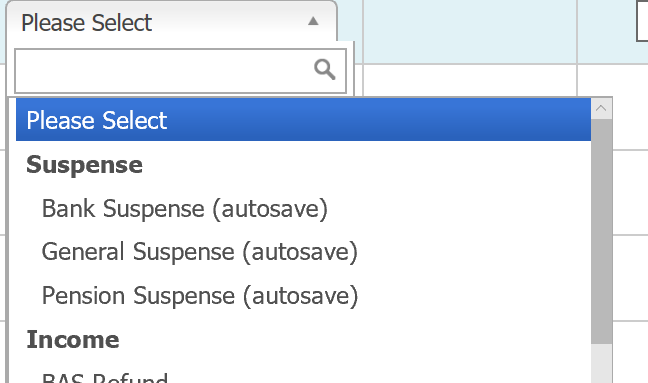Contents
When the researcher wants to concentrate exclusively on a few strata from the population information that is generated, stratified random sampling is a very effective sampling technique. In this manner, the questionnaire survey might contain the required properties of the strata. The bigger the differences between strata, the higher the precision gain. The only difference is the sampling fraction in the disproportionate stratified sampling technique.

In nonprobability sampling, members are chosen from the inhabitants in some nonrandom manner. These embrace convenience sampling, judgment sampling, quota sampling, and snowball sampling. The advantage of probability sampling is that sampling error may be calculated. Stratified random sampling divides a population into subgroups or strata, and random samples are taken, in proportion to the population, from each of the strata created.
Difference between Random Sampling and Non Random Sampling
With a diverse population that can be segmented using supplementary data, stratified random sampling works best. Stratified random sampling is one technique researchers employ to choose a small sample. Because stratificationfrequently decreases sampling error and improves accuracy, estimates produced inside strata are more accurate than those from random sampling. To improve the comparability of a particular demographic group, a stratified random sampling technique splits the population into pertinent strata. However, it can only be done if a demographic group’s essential strata are recognized and distinct. Stratified sampling is the division of a population into subclasses with distinct differences and variances.
If the number of units to be selected from a stratum is proportional to the size of the stratum, it is known as proportional allocation of samples. If the number of units to be selected is uniform in all strata it is known as equal allocation of samples. Because it uses specific characteristics, it could possibly provide a more accurate representation of the inhabitants based on what’s used to divide it into totally different subsets.
There is no clear method for selecting variables for the research sample. There are several cases where researchers should choose stratified random sampling over other sampling types. Next, when the researcher needs to analyse subgroups within a population, this is used. This approach is often used by researchers when they want to examine interactions between two or more subgroups, or when they want to investigate a population’s unusual extremes. A stratified sample is one that ensures adequate representation of the subgroups of a given population within the entire sample population of a research study.
- There is a lot of possibility of personal prejudice if the size and shape of the slips are not identical.
- A second downside is that arranging and evaluating the results is more difficult compared to a simple random sampling.
- When the population is finite sampling with replacement is adopted otherwise SWOR is adopted.
The members in each of the stratum formed have similar attributes and characteristics. A stratified random sampling procedure entails dividing the entire population into homogeneous groups known as strata . Consider an academic researcher who wants to know the number of MBA students who received a job offer within three months of graduation in 2007. Ans.4 A simple random sample is one method used by researchers to select a sample from a larger population. This method works if any of the subjects in a population has an equal chance of being chosen.
First, it’s used when the researcher desires to look at subgroups within a population. Researchers additionally use this system after they need to observe relationships between two or extra subgroups, or after they wish to look at the uncommon extremes of a inhabitants. Stratified random sampling differs from simple random sampling, which entails the random choice of knowledge from a whole population, so each potential pattern is equally likely to occur. This method of sampling means there might be choices from each different group—the size of which relies on its proportion to the entire population. A stratified sample includes subjects from each subgroup, ensuring that it is representative of your population’s diversity. It is theoretically possible that this would not occur if other sampling methods, such as simple random sampling, were used.
Stratified Sampling vs Cluster Sampling
Stratified random sampling differs from easy random sampling, which entails the random selection of information from a entire population, so each possible pattern is equally likely to happen. The stratum may be already defined or you might make the stratum yourself to suit the needs of your analysis. However, these samples are more difficult to create as you should have detailed information about what categories your inhabitants falls into.

To reduce researcher bias, multiple types of randomness can be used. It provides an opportunity to perform data analysis with a lower risk of error. When the costs for different strata are equal, it is known as Neyman’s https://1investing.in/ allocation. When the cost per unit varies from stratum to stratum, it is known as optimum allocation. This requires a complete list of the population but such up-to-date lists are not available in many enquires.
To make generalisations about a population, researchers use simple random sampling. An example of cluster sampling is space sampling or geographical cluster sampling. It is normally needed to increase the entire sample size to attain equal precision within the estimators, but cost financial savings could make such a rise in sample measurement possible. Sampling is a statistical analysis technique that involves selecting a predetermined number of observations from a larger population.
India Dictionary
The researcher and the rationale for their study determine the sample units from each stratum. Random samples are then drawn from each stratum and compared to one another to arrive at specific conclusions. When it comes to conducting statistical surveys and gathering data, there is no shortage of sampling techniques to choose from. There are numerous methods for designing a sample to represent your population of interest, including simple sampling, systematic sampling, quota sampling, and cluster sampling.

Even better, they could stratify the population and draw a random sample from each stratum. Ans.2 Random sampling ensures that the results obtained from your sample are close to those obtained if the entire population was measured. The simplest random sample gives each unit in the population an equal chance of being chosen. In this method all the items of the universe are numbered on separate slips of paper of same size, shape and color. The optimum allocation method uses variation in the stratum and cost to determine the stratum sample size ni .
Stratified Random Sampling: Disadvantages
The Stratified multistage random sampling is an effective method that combines the techniques of stratified random sampling and multistage sampling. Let us define multistage sampling and stratified random sampling separately. In order to pick out a pattern of students from this inhabitants of 10,000 students, we could choose to use a simple random pattern or a systematic random sample. However, generally we’re thinking about particular strata throughout the population. The type of study being done and the information that is used will determine the optimal sampling technique to use.
Our experts suggest the best funds and you can get high returns by investing directly or through SIP. CAs, experts and businesses can get GST ready with ClearTax GST software & certification course. Our GST Software helps CAs, tax experts & business to manage returns & invoices in an easy manner.
With this in mind, make sure to clearly outline what you want to accomplish and experiment with various methods to see which work best for your research. Researchers rely on stratified sampling when a population’s characteristics are diverse and they want to ensure that every character is properly represented in the sample. Under this method, every unit of the population at any stage has equal chance each unit is drawn with known probability.
This methodology of randomly deciding on people seeks to select a pattern dimension that is an unbiased illustration of the population. However, it isn’t advantageous when the samples of the population range extensively. With this system, you could have a higher statistical precision compared to simple definition of stratified random sampling random sampling. In a proportionate stratified method, the sample size of each stratum is proportionate to the population dimension of the stratum. When using stratified sampling, researchers have a better statistical precision compared to when they elect to make use of easy random sampling alone.
Disadvantages of Stratified Random Sampling
Prior to sampling, an evaluation is required to segment the community into pertinent strata. Proportional random sampling, often known as random quota sampling, is another name for stratified random sampling. Cluster sampling selects population elements in aggregates, whereas stratified sampling selects population elements individually from each stratum.
